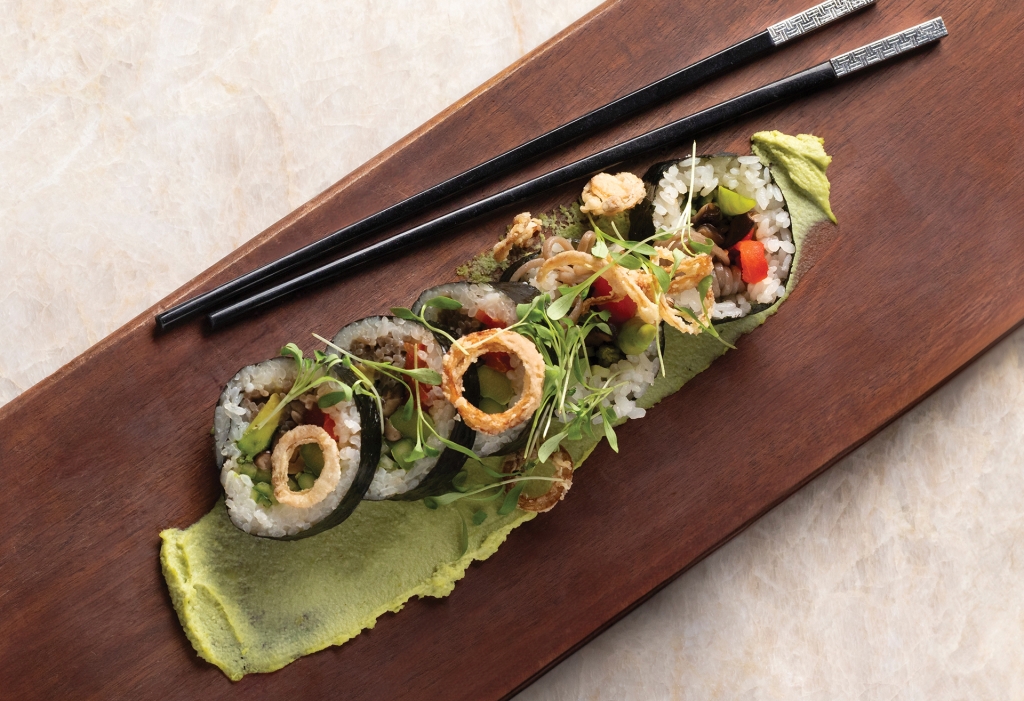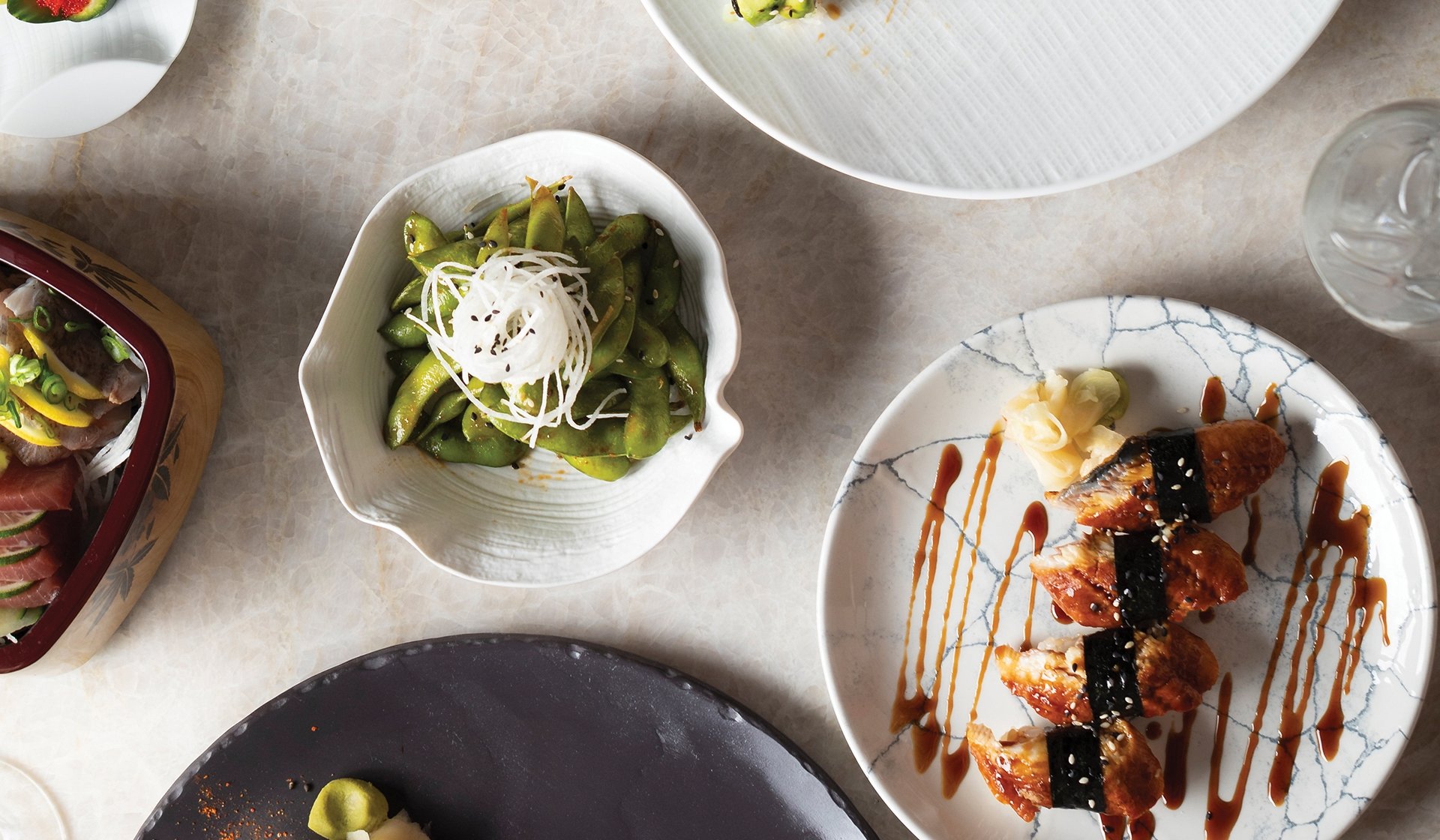Fish Tales
The Lounge inside Georgian Rooms brings a fresh, raw perspective to sushi.
Sushi, which refers to the seasoned rice, not the actual fish, originated as a way to preserve fresh fish somewhere between the fourth and eighth centuries. When rice ferments, it creates acid, which, along with salt, can pickle the fish, keeping it longer than it would in its raw state. The concept of preserving fish with rice spread as Buddhism did, as those who practiced the religion sought out alternatives to meat.
Many mark the late 1960s as the time when sushi came to America, by way of Los Angeles’ Little Tokyo neighborhood, whose restaurants catered to Japanese businessmen. It’s also when the California roll was invented, to be more palatable to Americans. Since then, the rise of superstar chefs like Matsaharu Morimoto and Nobu Matsuhisa have propelled sushi, and Japanese cuisine in general, to the forefront of American palates.

Soba’s Dream, a maki roll featuring soba noodles, vegetables, fried shallots, and edamame purée, showcase Steiner’s French-meets-Japanese approach to sushi.
“Sushi has evolved into something totally different in America,” states Grant Steiner, Chef de Cuisine for the Georgian Rooms Lounge at Sea Island. “The evolution came quickly,” he says, “with there being maybe one or two sushi restaurants in a major city to one or two per block,” all the while adapting to American tastes. Japanese chefs had to change their concepts and ideas, he says. “I was trained by very traditional master sushi chefs in traditional sushi, but as times have changed—just like with all food—sushi has evolved.”
In that spirit, Steiner is upholding the Japanese traditions he was taught while marrying them with his classical French training to produce a menu for the Georgian Rooms Lounge that reflects the current appetite for sushi in America: elevated and finessed, while paying homage to the centuries-old art form.

Chef Grant Steiner creating hand-rolled sushi materpieces
Steiner, who is Korean, believes there is room for combining cultural references, even at the highest levels of sushi. He is French-trained, has worked in Asian fusion restaurants, and is now leading the sushi program at Sea Island, mixing his influences to create a unique point of view. His French techniques marry well with traditional Japanese cuisine, creating a contemporary blend that’s just right for today’s diner. “Both highlight quality, restraint, and complexity of flavor,” shares Steiner.
Maki, sashimi, sushi, soup, dumplings, Japanese A5 Wagyu and more can be found on the menu, which pairs perfectly with the Ginza-style cocktail offerings. An example of Steiner’s French-meets-Japanese approach can be found in an elegant hamachi tataki. Traditional hamachi or amberjack yellowtail gets a traditional ponzu sauce, sprinkled with a touch of modernity in the form of truffle oil that is decidedly French, not Japanese. Additionally, dishes such as tuna tartare, served with a honey passion fruit soy reduction, avocado, rice crisps, and shrimp crackers; and Soba’s Dream, a maki roll featuring soba noodles, vegetables, fried shallots and edamame purée; solidify Steiner’s position.
Lest anyone think Steiner is dumbing down the sushi menu for Sea Island members and guests, he is not, noting that people who come to his restaurant have traveled and eaten sushi all over the world. “Our guest profile is more educated [on food],” he says, and he creates his food through that lens with enthusiasm.
To Steiner, the evolution is part of the enjoyment. “Sushi is changing once again, back to highlighting what it really means to break down fresh fish and showcase it,” he says. When incorporated with his classic French techniques, it’s an elevated experience that at once honors a centuries-old tradition and celebrates cultures coming together—all rolled up in perfectly sublime bites.




